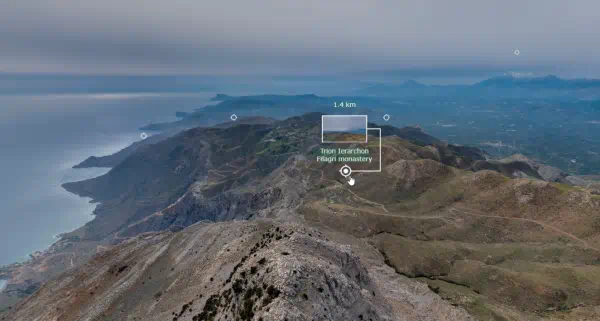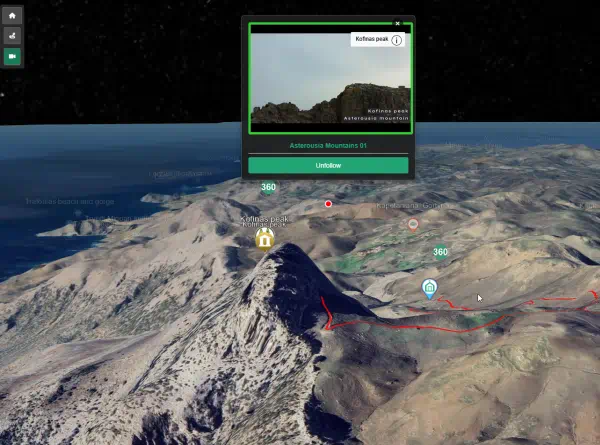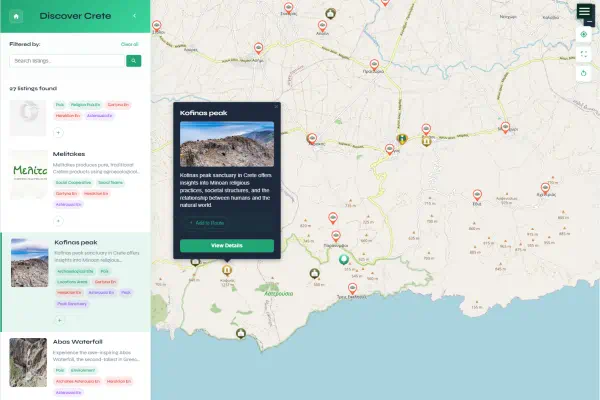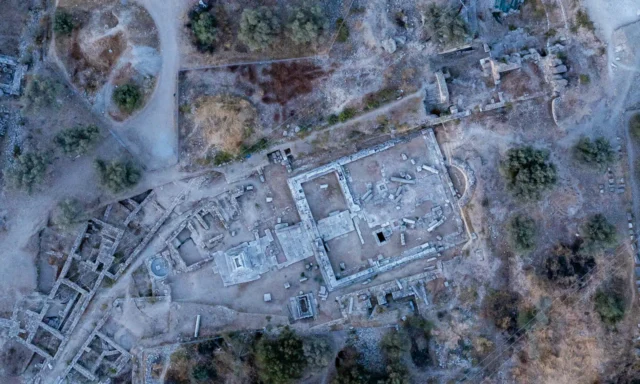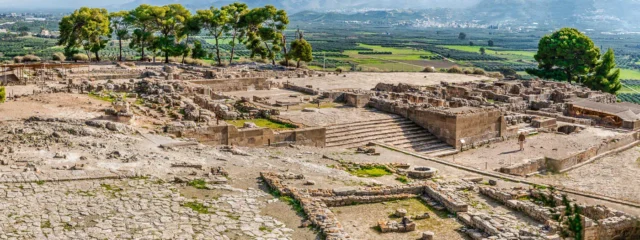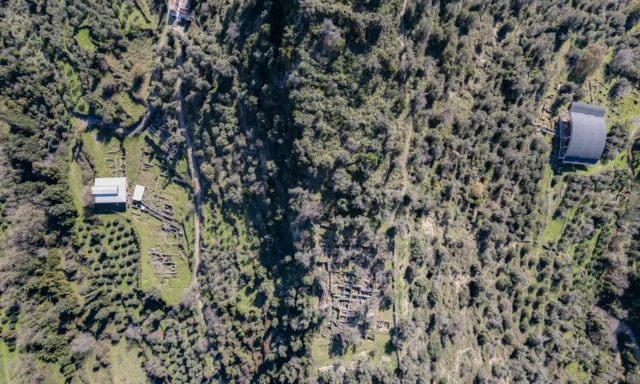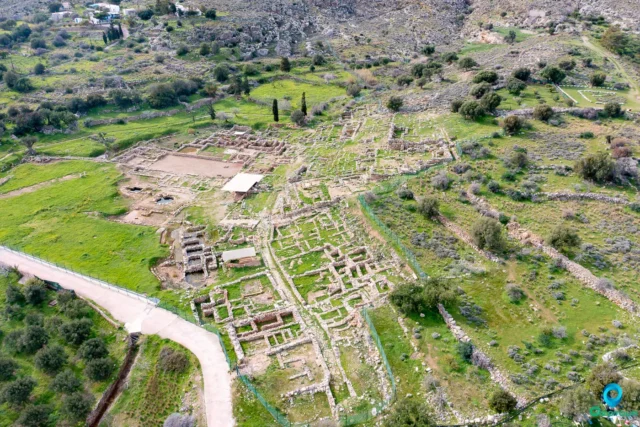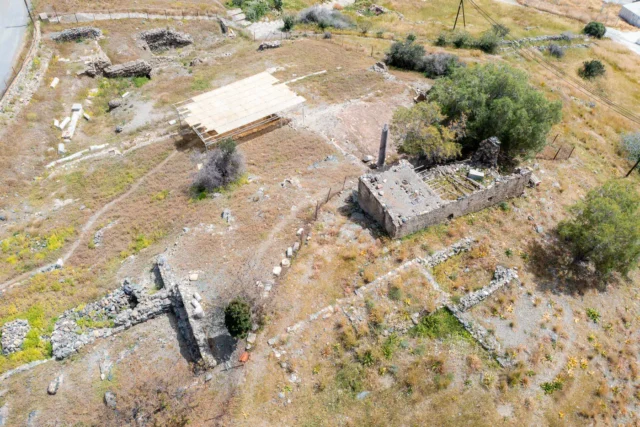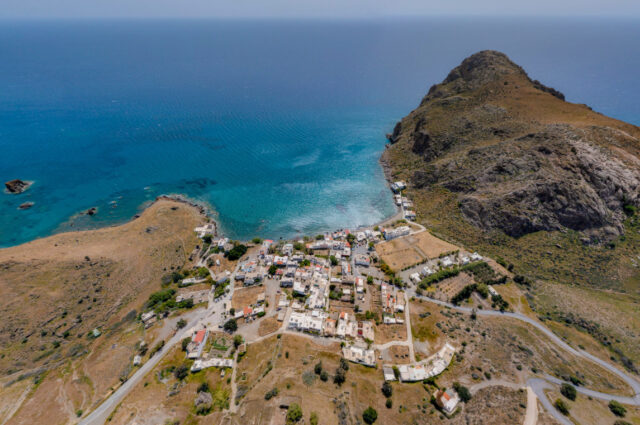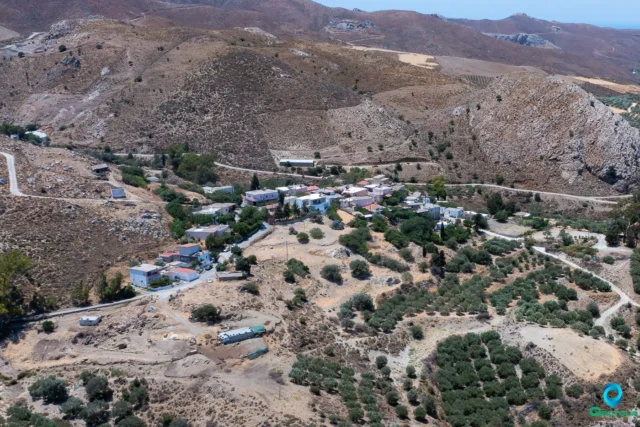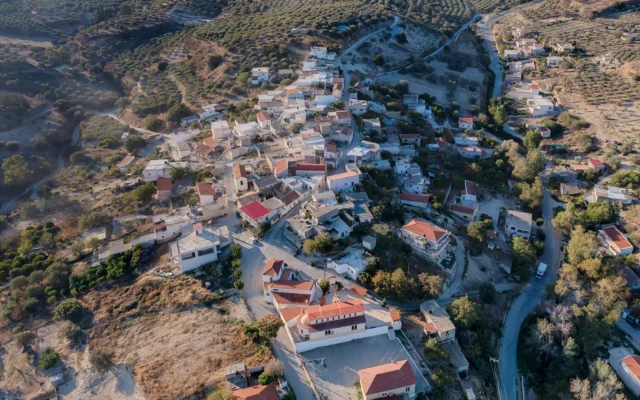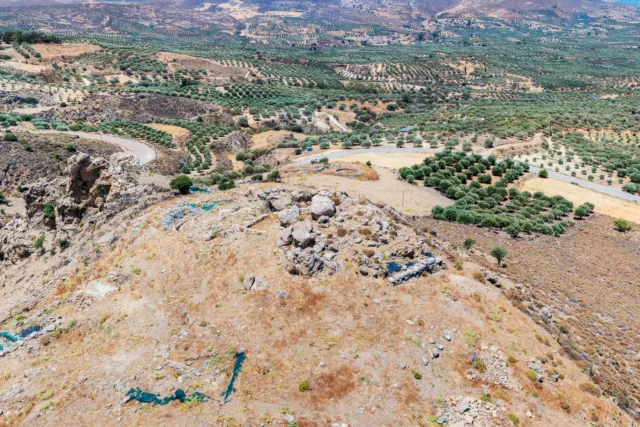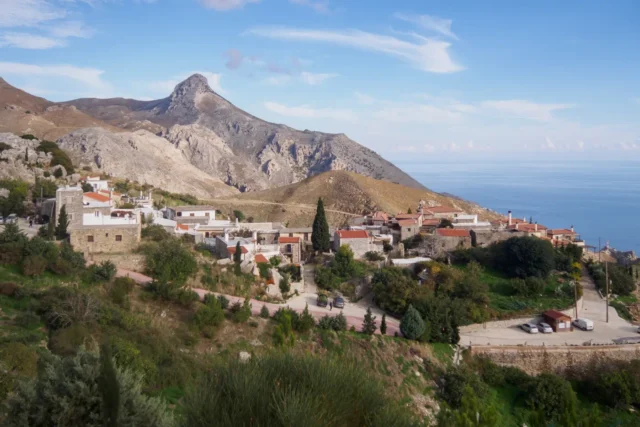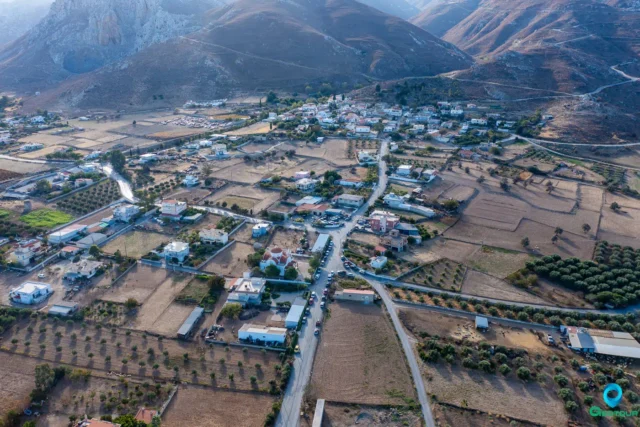Trypiti beach (Τρυπητή) is located on the southern coast of Crete’s Heraklion prefecture, in the Asterousia Mountains. It is approximately 57 to 73 kilometers south of Heraklion city and about 12 kilometers east of the coastal settlement of Lendas. The beach is situated on a small plain at the exit of the Tripiti Gorge. The location features mountains near the shoreline.
The name “Trypiti” means “the one with the holes” in Greek and relates to the area’s geology. It is often linked to the nearby chapel of Panagia Tripiti, constructed within a cave near the gorge’s exit. Additionally, the surrounding cliffs and rock formations have small caverns and cavities, which also relates to the name’s origin. Trypiti attracts visitors interested in nature and quieter locations compared to busier tourist areas.
Accessing Trypiti
Access to Trypiti beach requires driving on unpaved dirt tracks, as no asphalt roads lead directly there. This limits access to those comfortable with off-road driving and helps keep the beach less crowded.
Two main routes lead to Trypiti:
From Lendas: A dirt road, about 6 kilometers long, starts near the Lendas harbor and goes east towards Krotos village. After about 2 kilometers, a right turn at a junction leads across the Cape Trafoulas peninsula to the beach. This route may be bumpy and dusty.
From Vassiliki (Messara Plain): A 9 to 10-kilometer dirt track starts from Vassiliki village (usually reached via Agioi Deka). This route goes through the Asterousia Mountains, passing the olive groves of Agios Savvas and crossing the Agios Savvas gorge.
Descriptions of the road conditions vary. Some sources state the dirt road from Vassiliki is in fairly good condition, while others call the tracks rough or bumpy. The roads are unpaved and their condition can change, especially after rain.
The final part of the Vassiliki route goes through the Tripiti Gorge. Near the beach, the gorge narrows significantly, becoming wide enough for only one vehicle at a time between the high rock walls. This part of the drive through the gorge is often mentioned as a notable aspect of the trip.
Due to the terrain and road conditions, especially on the Vassiliki route, a four-wheel-drive (4×4) vehicle is recommended. Many organized jeep tours use 4×4 vehicles to reach Trypiti, indicating their usefulness. The need for suitable vehicles or tours limits the number of visitors.
The surrounding Asterousia Mountains have hiking trails, including routes connecting Trypiti to places like Ai Giannis. However, reaching Trypiti beach by vehicle using the described routes usually does not require a long walk from where you park. Parking is available near the beach, but space may be limited during busy periods.
The Beachscape: Pebbles, Water, and Natural Shelter
Trypiti beach is about 400 meters long. It is composed mainly of fine pebbles, although some sources mention a mix of pebbles and sand or charcoal sand. Nearby coves might have coarser sand. The main beach area is mostly pebbly with some sandy areas.
The water is clear and clean. Its color ranges from turquoise and deep green to blue or azure.
The sea at Trypiti is usually calm because Cape Fylakas to the west shelters the bay from wind and waves.
Information about water depth is conflicting. Some sources describe the water as deep, while others suggest it is shallow and suitable for families. A visitor report notes that the seabed deepens quickly away from the shore. This indicates that while entering the water may be easy, it becomes deep relatively close to the beach. This rapid change in depth should be considered, especially by families with children.
Natural shade is provided by tamarisk trees, which may be set back from the shore. Shade is also available near the rocks and cliffs at the sides of the beach.
Atmosphere, Amenities, and Visitor Experience
Trypiti beach is difficult to access, giving it a remote character. However, it is very popular with local residents and can become crowded, especially on weekends in summer or during August. While generally less busy than major tourist beaches, it is not always quiet during the high season due to local visitors and organized tours.
Trypiti is not an organized beach; rental sunbeds and umbrellas are not available. However, there are one or two small tavernas that provide basic food and drinks. These tavernas are sometimes used by jeep safari tours for lunch stops.
Several sources note the presence of numerous caravans installed by locals, as well as some huts or potentially illegally built rental rooms. This development exists even though the area is part of the protected Natura 2000 network, which has land use restrictions.
Activities at Trypiti include swimming, snorkeling, and exploring the nearby gorge exit and caves. Camping under the trees occurs, although it is reportedly prohibited. Visitors can also hike in the area or visit the ruins of the Minoan settlement of Papouri on a nearby hill. Stargazing is possible due to low light pollution. Organized jeep safaris are a common way to visit the beach.
- Coastal Walks: You can explore the coastline directly from Trypiti.
- Westward: A very short walk leads to a tiny, secluded cove at the base of Cape Fylakas. A longer walk of about 1km west takes you to Vyzaroplaka beach, noted for coarse sand and calm waters. Trafoulas beach is further west (approx. 2.2km), potentially reachable via coastal path or dirt track.
- Eastward: A hiking trail starting near Trypiti leads towards Agios Ioannis. Along this path, you can reach Leprias beach, characterized by pebbles and caves , and further on, Katarti beach at the exit of a small canyon (approx. 2.3km from Trypiti). More secluded coves like Salamias/Vourlidia lie further east but involve difficult hiking.
- Gorge Exit Exploration: You can easily walk back into the mouth of the Tripiti Gorge directly from the beach area. This allows you to see the towering cliffs and the very narrow passage (“Steno Faragi”) up close.
Cultural, Historical & Archaeological Sites (Walkable):
- Papouri Minoan Settlement: The ruins of this ancient settlement are located on a hill northeast of the beach, reportedly close to the tavern and easily walkable (approx. 0.6km – 1km). It’s known for its tiny windows and doors and offers great sea views.
- Panagia Tripiti Church: This small church is built inside a cave at the exit of the Tripiti Gorge, very near the beach (approx. 400m walk).

